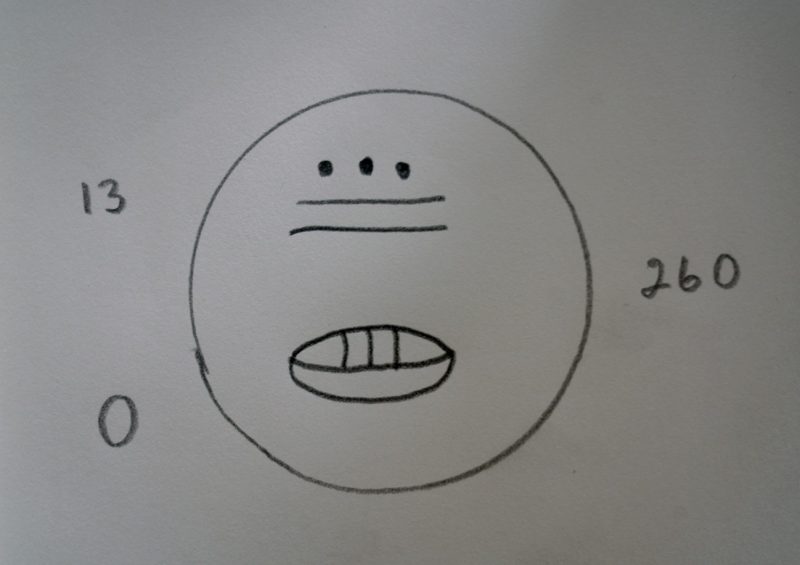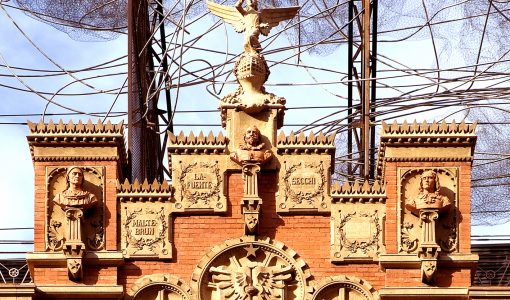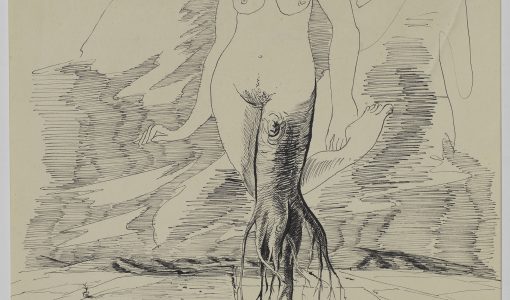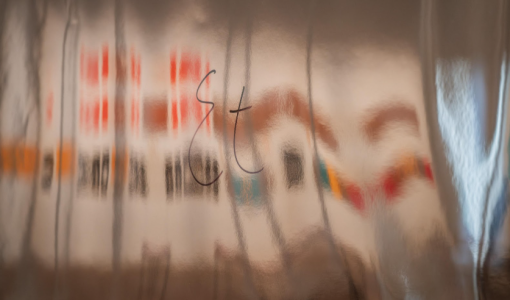
Thirteen Over Zero. Ritual-action-performance
Dates
17.07.2025 | 19:00-19:30
Category
Public Programme
Meeting point
Museu Tàpies
Hour
7 pm
Time
30 min
Price
€5
Become a Friend

Tattoo the sacred numbers of the Maya civilisation (13 and 0) on the upper right side of the chest. Thirteen is the number with the highest energy; zero (0) was used by the Maya long before the Western world used Arabic numerals. Zero is absence, emptiness, nothingness; zero is silence, expanding and stretching the eternity of the Maya civilisation.
In the Maya Cholqi’ij calendar, cycles are made up of 13 weeks and 20 days. It is a sacred calendar with 260 days (13 x 20 = 260). In Maya numerical symbolism, the number 13 is represented by drawing two sticks and three dots. Then a space is left underneath and a conch shell, symbolising zero, is drawn. This creates the number 260, like the 260 days of the Maya calendar, an ancestrally sacred number. Western modernity ignores, secularises, even demonises the number 13; for the Maya, it is sacred. Zero is totality, the beginning and the end; it symbolises the agricultural cycle and is represented by a conch shell.
The ritual-action-performance Thirteen Over Zero involves tattooing the sacred numbers 13 and 0 on Benvenuto Chavajay’s body. It is about dusting off history and activating memory, countless stories, wounds and accumulated legacies. Through this gesture, the Guatemalan artist activates ancestral memory to take a step forward, to heal and embrace all the wounds and legacies. It is about giving history a second chance.
Chavajay offers his skin as a sacrifice and an offering to his ancestors. He wounds his body, opens cracks in it, dropping in tiny black drops and creating lumps and grooves of memory. Scarring, coagulation, blood and charcoal, pain and tattooing.
Benvenuto Chavajay (San Pedro La Laguna, Atitlán Lake, Guatemala) defines himself as a chunchero artist, that is, an observer and intervener of chunches, a term that in Tz’utujil—the artist’s mother tongue—designates discarded objects that have lost their use value. His aim is to identify, ratify and dignify symbolic elements that are part of the history and ancestral knowledge of Maya culture, which he has inherited. In this interview, Chavajay uses his works in the Museo Reina Sofía Collection as a reference to explain how art can be a healing rite in response to the colonial wound. Based on this premise and far removed from the logics of modern Western thinking, in his project El retorno de las almas [The Return of the Souls] the artist embodies the dignification of the indigenous cultures that have been erased from history.
A session of the second edition of the series The Chairs of Tàpies

Dates
17.07.2025 | 19:00-19:30
Category
Public Programme
Meeting point
Museu Tàpies
Hour
7 pm
Time
30 min
Price
€5













